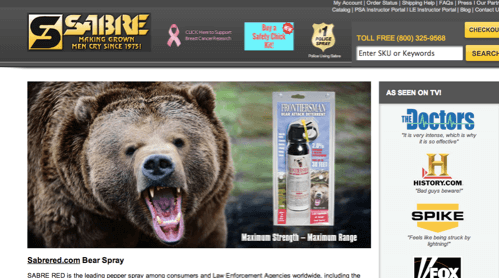Remove Page Elements For Higher Converting Pages
People often talk about including elements on a page to improve landing page conversions and user experience. I know I’ve personally written a lot on this particular topic. But, did you know that removing page elements can be just as effective at increasing conversions as adding or tweaking elements on a page? Both large and […]
People often talk about including elements on a page to improve landing page conversions and user experience. I know I’ve personally written a lot on this particular topic. But, did you know that removing page elements can be just as effective at increasing conversions as adding or tweaking elements on a page?
Both large and small companies often make the mistake of including too much information on landing pages. In this article, I’ll provide several examples of ways to effectively remove page content. The suggestions are fairly simple and can have a significant impact on your bottom line.
1. Remove Meaningless Elements
The most effective content on a page is content that speaks directly to the product(s) and/or service(s) you’re selling. Try removing elements that have no specific meaning to your users/visitors.
Stock images that try to portray a story — rather than those which contain information relevant to the product or service that you’re selling — are generally ineffective. Studies have shown that people often ignore stock images and prefer to look at photos of products or real people instead.
Take a look at the example from SabreRed.com below:
You’ll notice a stock image of a bear on a page that sells bear attack deterrent spray. I suppose the image of a bear is supposed to evoke an emotional response and scare us into buying the spray — however, it doesn’t actually convey any useful information to the visitor.
In this example, it would be better not to have a picture of the bear at all, replacing it instead with an enlarged, high-quality product image.
If it’s absolutely impossible to get rid of images (sometimes individuals get push back from the companies), it’s good idea to move the element(s) lower down the page so that it’s not so prominent (and therefore less distracting).
2. Hide (Other) Distracting Elements
The last thing you want to do is to distract someone who is about to make a purchase, call you, fill out a lead form, etc. Unfortunately, this is particularly easy to do on PPC landing pages, especially if a site and/or page has too many elements.
Make it easier for prospects to convert by removing distractions. Below are some examples of distracting elements that should be hidden on PPC landing pages to improve conversion events:
- Option to subscribe to receive email (request for email)
- Option to receive company newsletter
- Primary navigation bar
- Search functionality on the page
- Tax field for people who live in tax-free states (like Oregon, Alaska, etc.)
This is particularly useful for pages with commercial intent. You want to keep the focus of the page on the main conversion event(s) and not distract visitors with elements that take them away from this goal.
Take a look at your analytics for other hints at elements that can be removed from your page and/or site. If there are no clicks on particular page elements, they can be completely removed or given less prominence on the page. Here are a couple of recommendations:
- In Google Analytics, there’s a report called “In-Page Analytics” that shows the information people are clicking on.
- Crazy Egg allows you to see heat maps and visualize where your visitors’ attention is going.
A couple more points:
- Don’t be afraid of white space on your page. It’s better to have more white space than irrelevant and distracting content.
- Talk to clients and see what products/services they want to emphasize. If there are clicks on items they don’t want to emphasize, be sure to remove or downplay them on the page.
3. Remove Conversion Blockers On Your Cart
The cart abandonment rate has long hovered in the 65-70% range, which leaves a lot of room for improvement. The cart is obviously very important in terms of PPC conversions, so think about ways you can streamline your cart on PPC landing pages by removing conversion blockers. Below are a couple of examples:
Remove The Discount Code Box
While useful in some cases, the discount code box encourages people to do the coupon dance — something you don’t want your PPC leads doing.
If you absolutely need to have it on the page, then consider the following solutions:
- Have it as a link
- Have it in a not-so-obvious place
- Have it appear to specific people and/or audiences (using targeting like a referring URL)
Remove Manufacturer ID Number On Page
Another idea is to remove manufacturer ID numbers from the product page, as it encourages people to copy it and shop around for better offers. This often means your visitor will wind up buying the product on another site, either because the competitor is offering a better price, or because the competitor is offering the same price and now has the consumer’s attention instead of you.
Below is an example of how much money removing the MP# made for a particular client.
Conclusion
At the end of the day, improving PPC landing page performance isn’t always about adding new page elements. Removing elements that distract users, fail to provide useful information, or encourage visitors to go elsewhere on the web can have a huge impact on conversions. Sometimes, less is more!
Opinions expressed in this article are those of the guest author and not necessarily Search Engine Land. Staff authors are listed here.
Related stories
New on Search Engine Land


